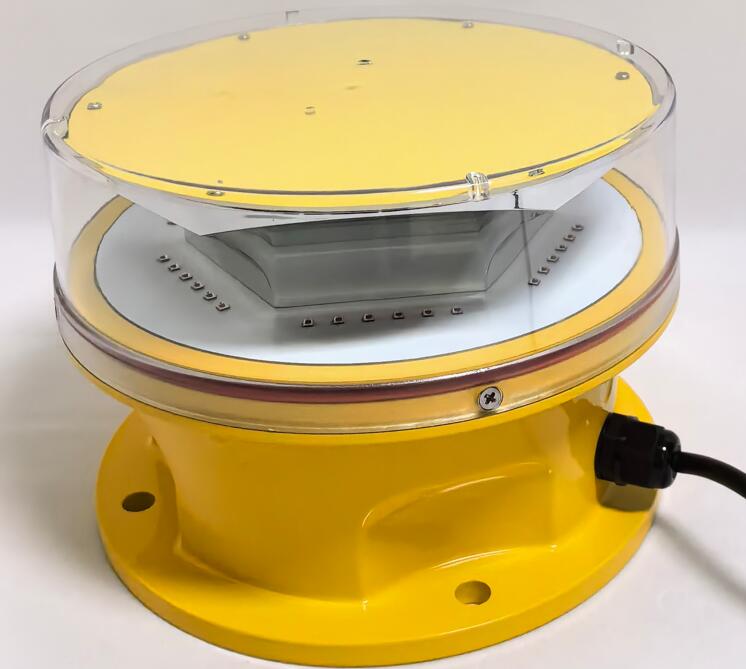Aviation Light for Tower Crane: Ensuring Safety in Construction and Airspace
In the bustling world of construction and aviation, safety is a shared priority. Tower cranes, which dominate urban skylines during building projects, pose a significant risk to low-flying aircraft, especially helicopters. To mitigate this risk, the aviation light for tower crane has become an essential safety feature. These lights ensure that cranes are visible to pilots, preventing collisions and safeguarding both construction sites and airspace. This article explores the importance, functionality, and advancements of aviation lights for tower cranes.
The Role of Aviation Lights for Tower Cranes
Tower cranes are among the tallest structures on construction sites, often reaching heights that intersect with low-altitude air traffic routes. Without proper lighting, these cranes can become invisible to pilots, particularly at night or in poor weather conditions. The aviation light for tower crane is designed to address this issue by marking the crane's presence and making it visible from a distance.
These lights are typically installed at the highest points of the crane, including the jib and the tower. They emit bright, flashing lights that can be seen from miles away, ensuring that pilots can identify and avoid the crane during flight operations.

Types of Aviation Lights for Tower Cranes
There are several types of aviation lights used on tower cranes, each tailored to specific requirements:
| aviation light for tower crane |
Low-Intensity Aviation Lights: These are used on cranes that are less than 45 meters tall. They emit a steady red light and are suitable for areas with low air traffic density.
Medium-Intensity Aviation Lights: These lights are used on cranes between 45 and 150 meters tall. They can emit either a steady red light or a flashing white light, depending on local regulations and the crane's location.
High-Intensity Aviation Lights: Reserved for cranes exceeding 150 meters in height, these lights emit a powerful flashing white light. They are designed to be visible from great distances, even in adverse weather conditions.
| aviation light for tower crane |
Regulatory Standards for Aviation Lights on Tower Cranes
The installation and maintenance of aviation lights on tower cranes are governed by strict regulatory standards. In many countries, aviation authorities such as the Federal Aviation Administration (FAA) in the United States or the Civil Aviation Authority (CAA) in the United Kingdom set the guidelines for these lights. These regulations specify the type of lights to be used, their placement, and their intensity.
Compliance with these standards is mandatory. Failure to install or maintain proper aviation lights on tower cranes can result in severe penalties, including fines and legal action. More importantly, non-compliance can lead to accidents, endangering lives and causing significant damage to property.
Technological Innovations in Aviation Lights for Tower Cranes
Advancements in technology have significantly improved the effectiveness and efficiency of aviation lights for tower cranes. One of the most notable developments is the adoption of LED technology. LED lights offer several advantages over traditional incandescent bulbs, including:
Energy Efficiency: LEDs consume less power, reducing operational costs and environmental impact.
Durability: LED lights have a longer lifespan, requiring less frequent maintenance and replacement.
Brightness: LEDs provide brighter and more consistent illumination, improving visibility for pilots.
Another innovation is the integration of remote monitoring systems. These systems allow construction site managers to monitor the status of aviation lights in real-time, ensuring that any malfunctions are quickly detected and addressed. This is particularly valuable for cranes located in remote or hard-to-reach areas.
The Importance of Aviation Lights in Urban Construction
As cities continue to grow vertically, the number of tower cranes in urban areas is increasing. This growth underscores the importance of aviation lights in maintaining safety for both construction sites and air traffic.
In densely populated urban areas, where air traffic is often concentrated, aviation lights on tower cranes play a critical role in preventing collisions. For example, helicopters conducting medical evacuations or police operations rely on these lights to navigate safely around construction sites.
Challenges and Future Directions
Despite their importance, aviation lights for tower cranes face several challenges. One issue is light pollution, which can affect nearby communities and wildlife. To address this, researchers are exploring ways to minimize the impact of aviation lighting while maintaining its effectiveness. For instance, directional lighting and adaptive systems that adjust brightness based on ambient conditions are being tested.
Another challenge is the integration of aviation lights with emerging technologies such as drones and autonomous aircraft. As these technologies become more prevalent, aviation lighting systems may need to evolve to accommodate new types of air traffic.
Looking ahead, the future of aviation lights for tower cranes lies in smart systems that can communicate with aircraft and air traffic control. These systems could provide real-time data on lighting status, weather conditions, and potential hazards, further enhancing safety.
The aviation light for tower crane is a vital component of modern construction and aviation safety. By marking the presence of cranes and making them visible to pilots, these lights prevent collisions and ensure the safe coexistence of construction activities and air traffic. As technology continues to advance, aviation lights for tower cranes will become more efficient, sustainable, and integrated with the broader aviation ecosystem.
In a world where urban landscapes are constantly evolving, aviation lights for tower cranes serve as a beacon of safety, guiding pilots and ensuring that the skies remain a safe and navigable space for all.
